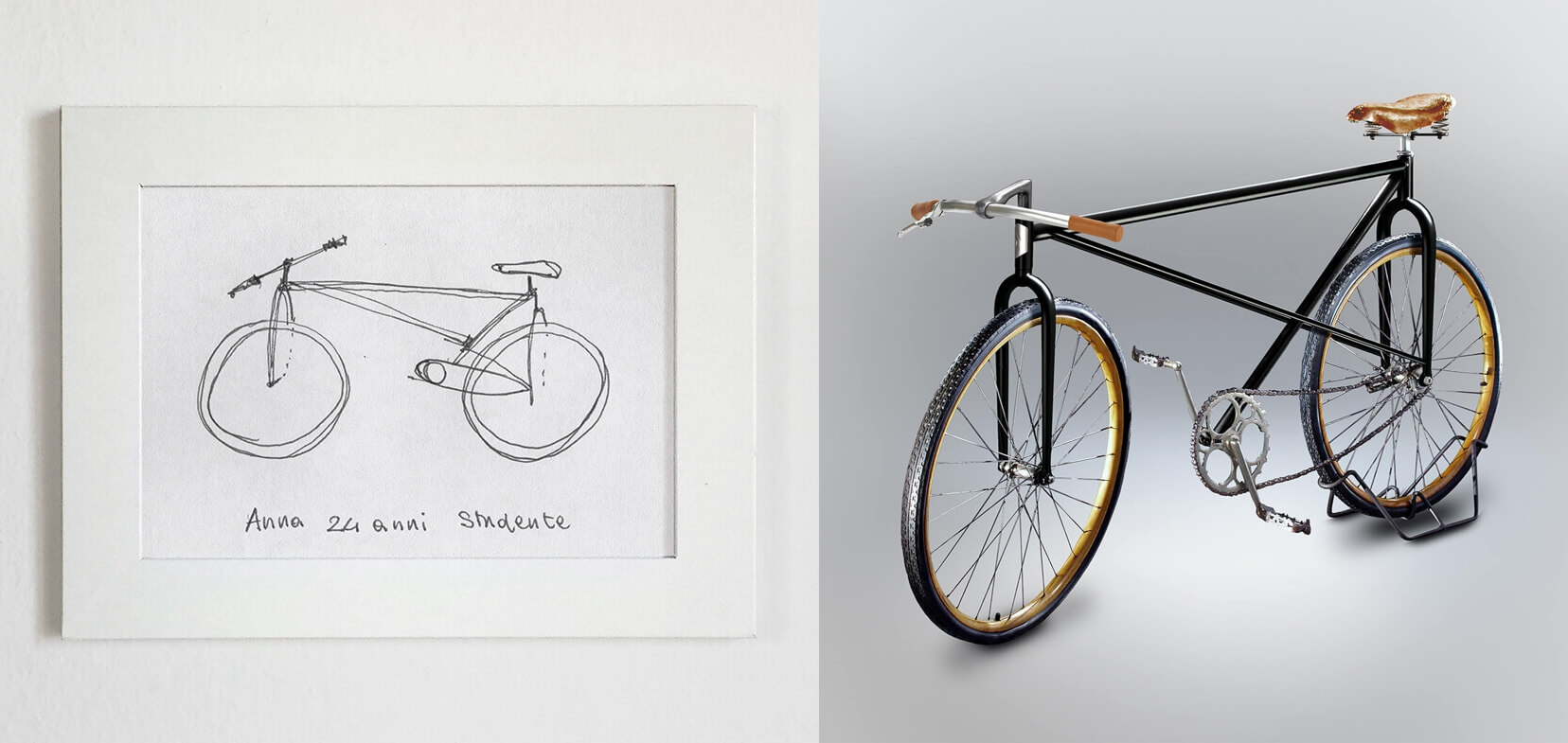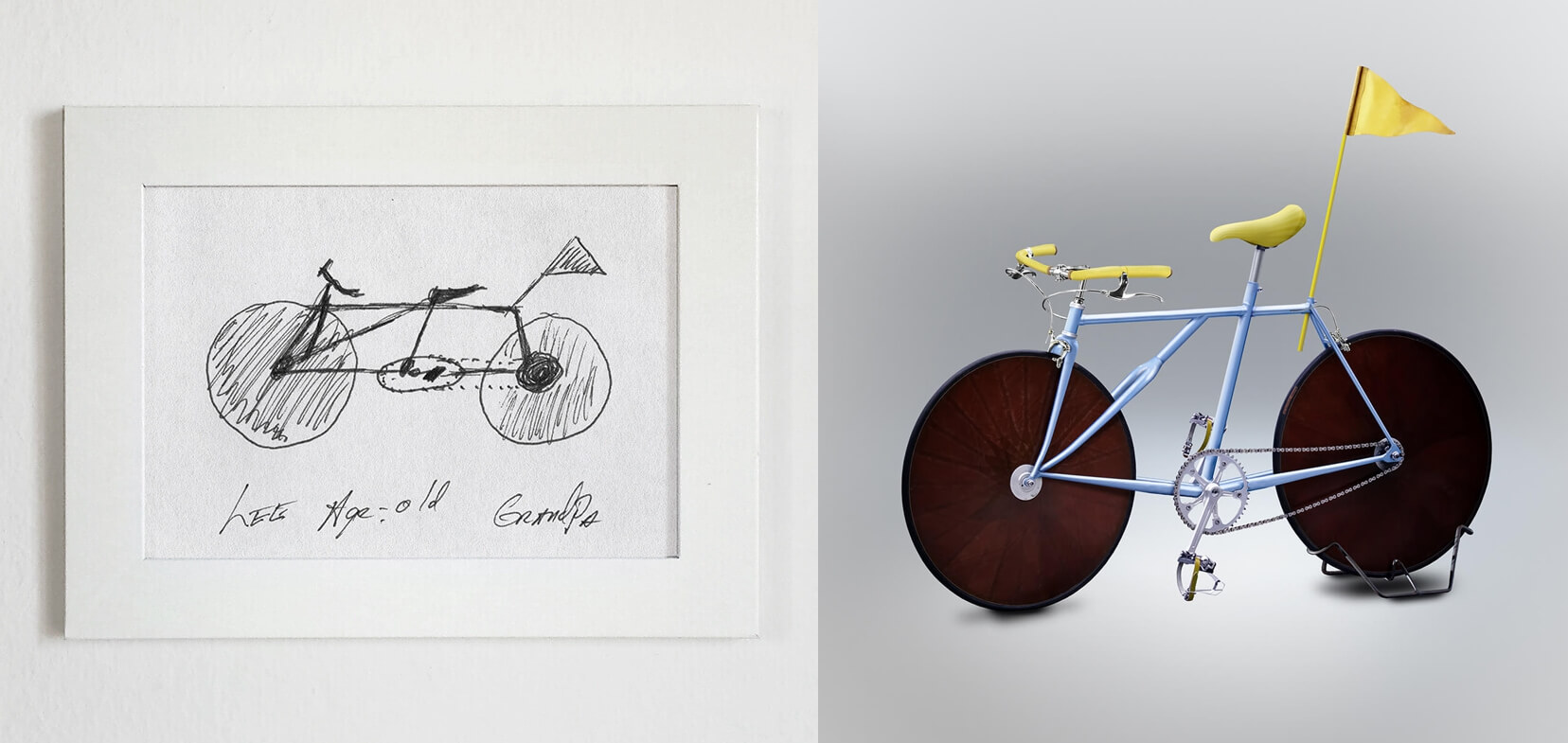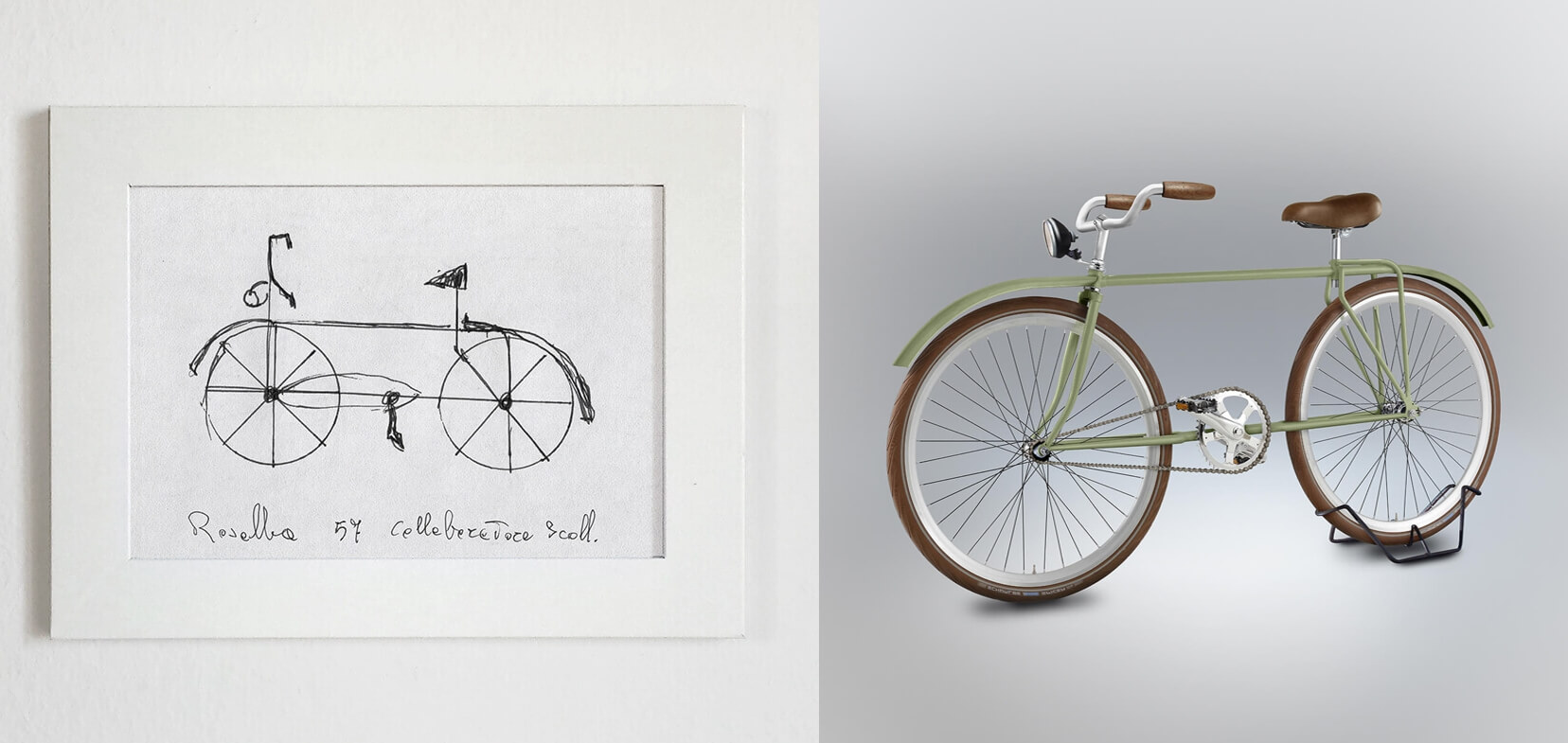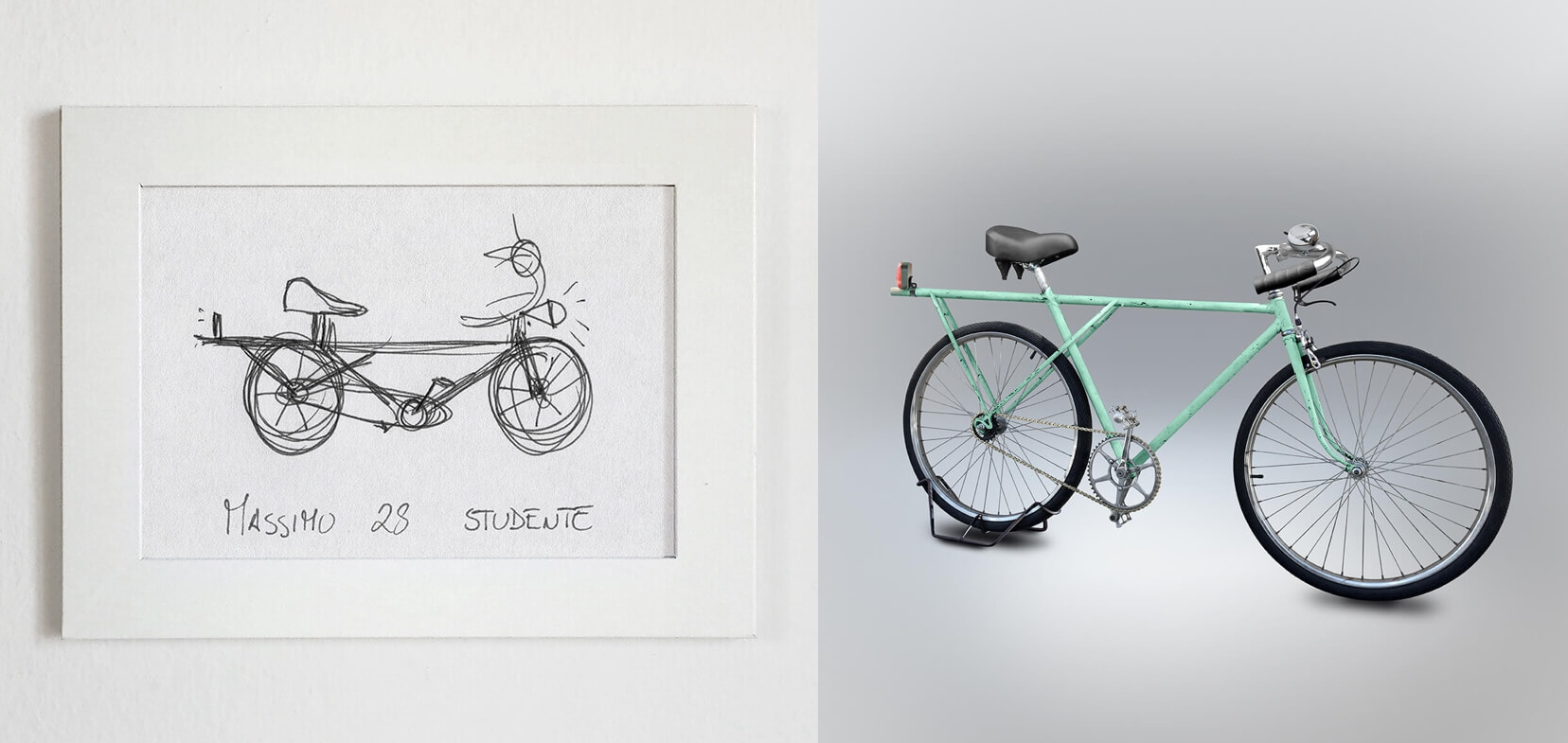Before you read any further here’s a quick test – grab a pen and a piece of paper and draw a bike from memory. How did you get on? This seemingly simple task is the starting point for Italian designer Gianluca Gimini’s project Velocipedia.
It started back in 2009 when a friend told him a funny story about a schoolmate getting in a hopeless mess when trying to draw a bike for his tech ed teacher. The friend then got a pen and tried to prove how easy it was to draw a bike – only to find it really, really wasn’t.
Intrigued, Gianluca started carrying a pen and paper around with him and challenging friends, family and total strangers to see if they could draw a bike. “Soon I found out that when confronted with this odd request, most people have a very hard time remembering exactly how a bike is made. Some did get close, some actually nailed it, but most ended up drawing something that was pretty far off from a regular men’s bicycle.”

Image: Gianluca Gimini

Image: Gianluca Gimini

Image: Gianluca Gimini

Image: Gianluca Gimini
“There is an incredible diversity of new typologies emerging from these crowd-sourced and technically error-driven drawings,” Gianluca says. “A single designer could not invent so many new bike designs in 100 lifetimes, and this is why I look at this collection in such awe. Everyone, regardless of his age and job, can come up with extraordinary, wild, new and at times brilliant inventions.”
And so bowled over by the diversity and invention on show, Gianluca used his professional skills to render the sketches into realistic photographic images. This gives the project a whole new lease of life. While some are immediately ridiculous, with others it takes a a few seconds’ study to work out where they have gone wrong.
What Gianluca later found out is that psychologists commonly ask patients to draw a bike to prove how deceptive memories of commonplace objects can be, and so Velocipedia is of scientific as well as creative interest.

Image: Gianluca Gimini

Image: Gianluca Gimini
Fun facts:
-Some diversities are gender driven. Nearly 90% of drawings in which the chain is attached to the front wheel (or both to the front and the rear) were made by females. On the other hand, while men generally tend to place the chain correctly, they are more keen to over-complicate the frame when they realize they are not drawing it correctly.
-One of the most frequent issues for participants was not knowing exactly how to describe their job in short.
-The most unintelligible drawing has also the most unintelligible handwriting. It was made by a doctor.
Some stats:
-Total number of collected bicycles: 376
-Youngest participant: 3 years old
-Oldest participant: 88 years old
-Different nationalities of participants: 7
-Bicycles facing left: 75 %
-Bicycles facing right: 25 %
Via: https://wetransfer.com/thisworks/2016/04/01/gianluca-gimini/
https://www.behance.net/gallery/35437979/Velocipedia

